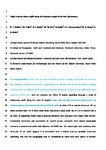Rapid mantle-driven uplift along the Angolan margin in the late Quaternary
| dc.contributor.author | Walker, RT | |
| dc.contributor.author | Telfer, Matt | |
| dc.contributor.author | Kahle, RL | |
| dc.contributor.author | Dee, MW | |
| dc.contributor.author | Kahle, B | |
| dc.contributor.author | Schwenninger, J-L | |
| dc.contributor.author | Sloan, RA | |
| dc.contributor.author | Watts, AB | |
| dc.date.accessioned | 2016-11-22T20:18:09Z | |
| dc.date.available | 2016-11-22T20:18:09Z | |
| dc.date.issued | 2016-11-14 | |
| dc.identifier.issn | 1752-0894 | |
| dc.identifier.issn | 1752-0908 | |
| dc.identifier.uri | http://hdl.handle.net/10026.1/6776 | |
| dc.description.abstract |
Mantle flow can cause the Earth's surface to uplift and subside, but the rates and durations of these motions are, in general, poorly resolved due to the difficulties in making measurements of relatively small vertical movements (hundreds of metres) over sufficiently large distances (about 1,000 km). Here we examine the effect of mantle upwelling through a study of Quaternary uplift along the coast of Angola. Using both optically stimulated luminescence on sediment grains, and radiocarbon dating of fossil shells, we date a 25 m coastal terrace at about 45 thousand years old, when sea level was about 75 m lower than today, indicating a rapid uplift rate of 1.8-2.6 mm yr â '1 that is an order of magnitude higher than previously obtained rates averaged over longer time periods. Automated extraction and correlation of coastal terrace remnants from digital topography uncovers a symmetrical uplift with diameter of more than 1,000 km. The wavelength and relatively short timescale of the uplift suggest that it is associated with a mantle process, possibly convective upwelling, and that the topography may be modulated by rapid short-lived pulses of mantle-derived uplift. Our study shows that stable continental regions far from the effects of glacial rebound may experience rapid vertical displacements of several millimetres per year. | |
| dc.format.extent | 909-914 | |
| dc.language | en | |
| dc.language.iso | en | |
| dc.publisher | Springer Science and Business Media LLC | |
| dc.title | Rapid mantle-driven uplift along the Angolan margin in the late Quaternary | |
| dc.type | journal-article | |
| dc.type | Journal Article | |
| plymouth.author-url | https://www.webofscience.com/api/gateway?GWVersion=2&SrcApp=PARTNER_APP&SrcAuth=LinksAMR&KeyUT=WOS:000390478700018&DestLinkType=FullRecord&DestApp=ALL_WOS&UsrCustomerID=11bb513d99f797142bcfeffcc58ea008 | |
| plymouth.issue | 12 | |
| plymouth.volume | 9 | |
| plymouth.publication-status | Published | |
| plymouth.journal | Nature Geoscience | |
| dc.identifier.doi | 10.1038/ngeo2835 | |
| plymouth.organisational-group | /Plymouth | |
| plymouth.organisational-group | /Plymouth/Faculty of Science and Engineering | |
| plymouth.organisational-group | /Plymouth/Faculty of Science and Engineering/School of Geography, Earth and Environmental Sciences | |
| plymouth.organisational-group | /Plymouth/REF 2021 Researchers by UoA | |
| plymouth.organisational-group | /Plymouth/REF 2021 Researchers by UoA/UoA14 Geography and Environmental Studies | |
| plymouth.organisational-group | /Plymouth/Users by role | |
| plymouth.organisational-group | /Plymouth/Users by role/Academics | |
| dcterms.dateAccepted | 2016-10-10 | |
| dc.rights.embargodate | 2016-5-14 | |
| dc.identifier.eissn | 1752-0908 | |
| dc.rights.embargoperiod | 6 months | |
| rioxxterms.versionofrecord | 10.1038/ngeo2835 | |
| rioxxterms.licenseref.uri | http://www.rioxx.net/licenses/under-embargo-all-rights-reserved | |
| rioxxterms.licenseref.startdate | 2016-11-14 | |
| rioxxterms.type | Journal Article/Review |


